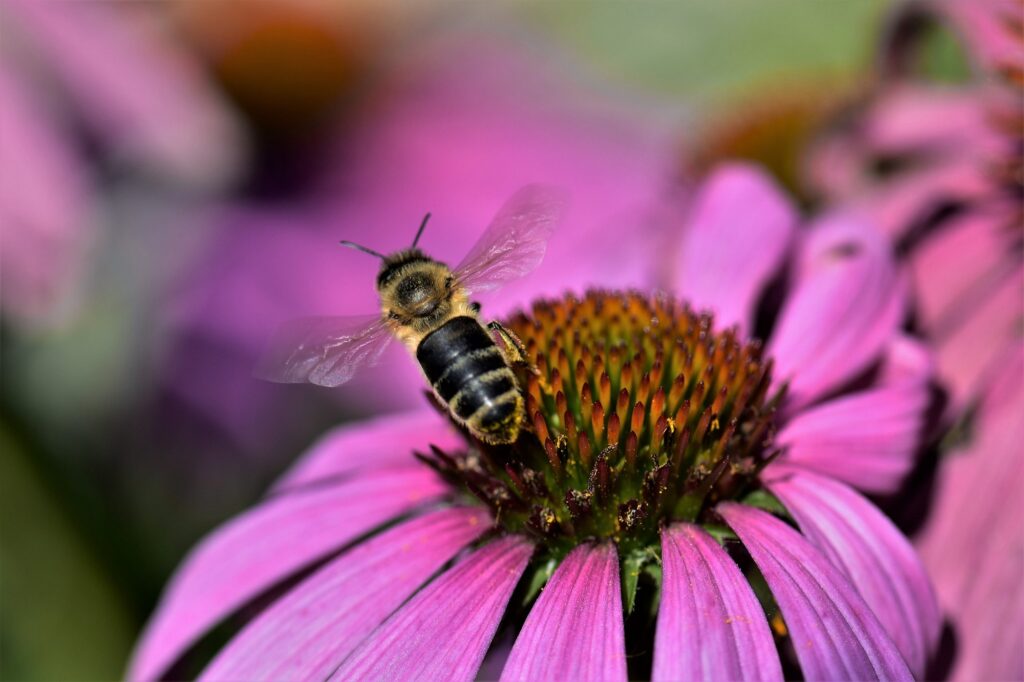Purple Coneflower (Echinacea purpurea) is a striking perennial plant known for its vibrant purple daisy-like flowers and valuable medicinal properties. Growing Echinacea in your landscape adds multiple benefits to your backyard ecosystem.
Belonging to the Asteraceae family, this hardy herbaceous perennial is native to eastern and central North America.
It thrives in a variety of climates and can be cultivated in different zones, making it a popular choice for home gardens.
When to Start Echinacea from Seed Indoors
In Zones 3-5: Start seeds indoors 8-10 weeks before the last spring frost date, typically in late winter to early spring.
In Zones 6-8: Begin indoor seed starting 6-8 weeks before the last expected frost date, typically in late winter or early spring.
In Zones 9-12: Start Echinacea seeds indoors or under cover approximately 8-10 weeks before planting out to avoid exposing tender shots from high heat and pounding rains.

Growing Echinacea Seeds to Start Indoors
Purple Coneflower seeds may benefit from cold stratification to break dormancy. To do this, place seeds in a damp paper towel inside a sealed plastic bag and refrigerate for 4-6 weeks before planting.
Seed Starting Mix
Select a well-draining seed starting mix or create one by mixing two parts coconut coir and one part perlite or vermiculite. Ensure the mix is damp but not waterlogged.
Containers
Use seed trays or pots with drainage holes to prevent waterlogged soil. Fill containers with the seed starting mix.
Planting Depth
Sow the seeds 1/4 inch (6 mm) deep in the prepared mix. Space seeds at least 2 inches (5 cm) apart or one per cell block if using cell trays.
Moisture
Mist the soil surface lightly with water to ensure even moisture. Cover the containers with plastic wrap or a humidity dome to maintain humidity.
Optimal Temperature
Place the containers in a warm location with a consistent temperature of 70-75°F for germination, which typically takes 10-21 days.
Light Requirements
Once seedlings emerge, provide bright, indirect light or use grow lights for 12-16 hours daily.
Transplanting
When seedlings have developed at least two sets of true leaves and outdoor conditions are suitable, transplant them into the garden.
Preparing the Garden Bed for Echinacea

Choose a sunny location with well-drained soil. Echinacea prefers full sun but can tolerate partial shade.
Ensure the soil is well-draining, loamy, and slightly acidic to neutral (pH 6.0-7.0). Amend the soil by adding a layer of compost for added nutrients.
Ensure you have at least 18-24 inches for each Echinacea plant to allow for their mature size.
Hardening Off Purple Coneflower Plants
Gradually acclimate indoor-grown seedlings to outdoor conditions over 7-10 days. Start by placing them in a sheltered spot with filtered sunlight, increasing exposure gradually until they are ready for full sun.
Planting Purple Coneflower into the Garden
Dig holes that are slightly larger than the root ball of your seedlings. Plant them at the same depth as they were in their containers.
Maintain the recommended spacing of 18-24 inches between plants.
Apply a layer of organic mulch around the base of the plants to conserve moisture and suppress weeds. You can use hay, straw, or woodchips.
Water deeply after planting, and then provide 1 inch of water per week, ensuring the soil remains consistently moist but not waterlogged.
Caring for Echinacea Plants

Water during dry periods and avoid overhead watering to prevent foliar diseases.
Fertilize sparingly with a balanced, slow-release organic fertilizer for flowers in early spring and again in mid-summer. Alternatively, adding a layer of compost in spring and at midsummer will also work.
Regularly remove weeds to reduce competition for nutrients and space.
Tips and Tricks for Growing Echinacea
Control aphids and other pests by refraining from using chemical pesticides that also harm predator and beneficial insects like ladybugs.
Promote good air circulation by removing leaves to prevent foliar diseases and avoid overhead watering.
Remove spent flowers to encourage continuous blooming and prevent self-seeding.
Collecting Echinacea Seeds
Allow a few flower heads to mature on the plant. Harvest seeds when they turn brown and are easy to detach. Store seeds in a cool, dry place for future planting.
Growing Echinacea will attract pollinators to your garden while enhancing your landscape’s beauty.





